On August 30, 1928, more than 3,200 people welcomed Marion’s “Half-A-Million-Dollar Palace” as the Palace Theatre opened its doors to the public. Designed by John Eberson, a famed Austrian-American theatre architect, the Palace is one of only 16 atmospheric theatres still in existence in the United States.
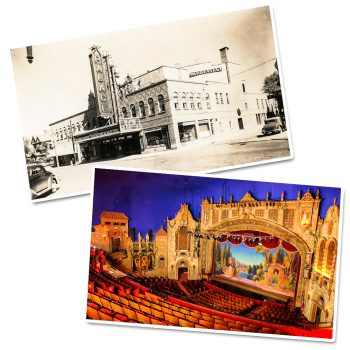
Generations of Marion residents have sat in the chairs, looking up at the Spanish revival architecture and the feeling of being under a blue night sky. Stars from Duke Ellington, Cab Calloway, Louis Armstrong and comedians like Weird Al Yankovic have taken to the stage.
“The Palace has always been very near to my heart, from the time I was 2 years old and my parents took me to see the film ‘Mary Poppins’ on the big screen to the time of my first performance at age 15 where I played one of the orphan boys in the 1977 summer musical, ‘Oliver!’ to November 2021 when I took over as Executive Director,” said Kirk Detweiler.
Palace Faces Financial Challenges
As silent movies and vaudeville shows gave way to “talkies,” the Great Depression brought the theatre to near financial ruin. After squeaking by during the Depression by decreasing ticket prices, giving away free dishes and offering sweepstakes, World War II and the financial prosperity it brought breathed new life into the theatre. The new post-war prosperity was short-lived as the advent of television once again ate away at the Palace’s audience.
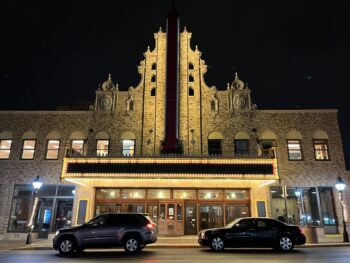
After years of scraping by, the owners of the Palace decided to sell it in 1975. Declining attendance and an auditorium in great need of updating nearly signaled the death knell for the grand lady. One potential buyer wanted to convert the building into storage units. Another buyer wanted to raze the building and build a gas station.
Community Rallies to Save the Palace Theatre
One local businessman, who grew up in Marion and had many fond memories of growing up watching shows and live performances at the Palace refused to let this local treasure be demolished. John C. Keggan and a group of fellow business owners collected $75,000 to purchase the building.
The group then raised another $500,000 to return the Palace to its former glory. They became known as “The Palace Guard” and formed the non-profit Palace Cultural Arts Association (PCAA) to keep the theatre alive for future generations. They also installed a 1924 Wurlitzer organ to replace the original Page organ, which had been sold to raise funds.
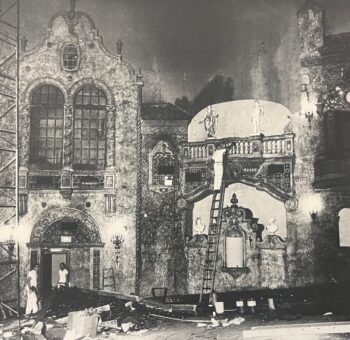
“I’m so grateful of the many people who have served to save, maintain, and advance the Palace Theatre into the 21st century. It’s absolutely an architectural masterpiece and represents the heart of downtown Marion and the community’s spirit,” said Mike Stuckey, a past president of the PCAA Board of Directors.
“Being a big theatre in a relatively small town, Marion is blessed that we still have the Palace and thank the Palace Guard for saving her!” Detweiler said.
Palace Expands
The Palace expanded by adding the May Pavilion in 2008. This multi-purpose venue hosts meetings, graduations, dinners, classes, weddings, proms and small-cast productions.
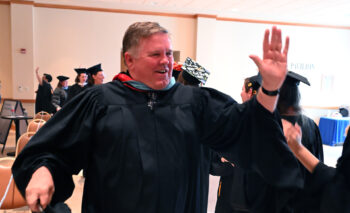
“The PCAA is a non-profit and we wouldn’t make it without our wonderful staff and 200 volunteers who keep the engines going,” Detweiler said.
Structural Problems Found
In 2013, the Board of Directors found the steel structure under the grand front façade was failing. The community responded again. State funding plus generous local donors restored the front of the Palace and turned on the lights to the new marquee to thunderous applause from local residents.
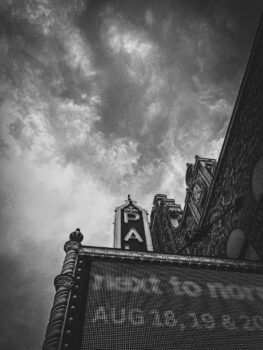
“Due to internal structural damage, the front façade of the building and marquee were literally falling apart and was unsafe,” Stuckey said. “Thanks to State Capital grants and hundreds of local donors who supported the restoration project, the theater was successfully returned to its former glory!”
Modern Updates and Future Plans
Since 2016, the theatre added a new sound system, a new roof and new windows. Future plans include refreshing the terra cotta interior of the main auditorium, repairing and repainting the ceiling and installing new theatre seating.
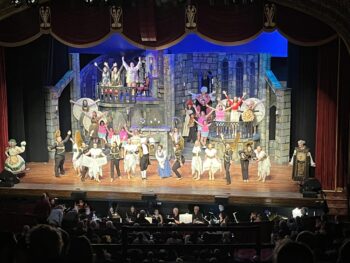
“I love going to see acts from local community performances to national musicians. It is great that volunteers, donors, actors and musicians of all ages work together to make each performance come together,” Stuckey said.

“Over the past couple of seasons, we’ve been working hard to reach out to younger and more diverse demographics, who perhaps never had the opportunity to visit the Palace,” Detweiler said.
Economic Impact
Today, the PCAA relies on ticket sales, government and corporate grants, memberships and show sponsorships to keep the doors open.
In the last fiscal year, the Palace hosted 90,000 visitors and brought more than $1.98 million to the vibrant local community in addition to ticket sales, according to the Americans for the Arts Economic Impact Calculator.
MarionMade! is a program of Marion Technical College.


















